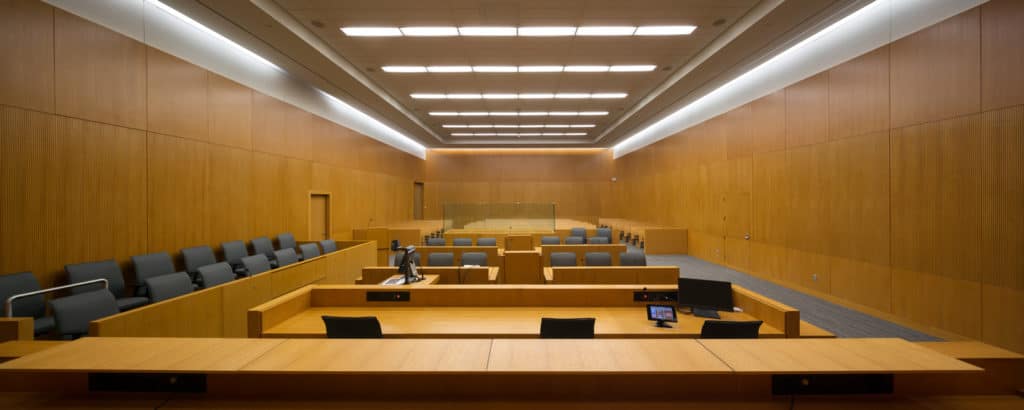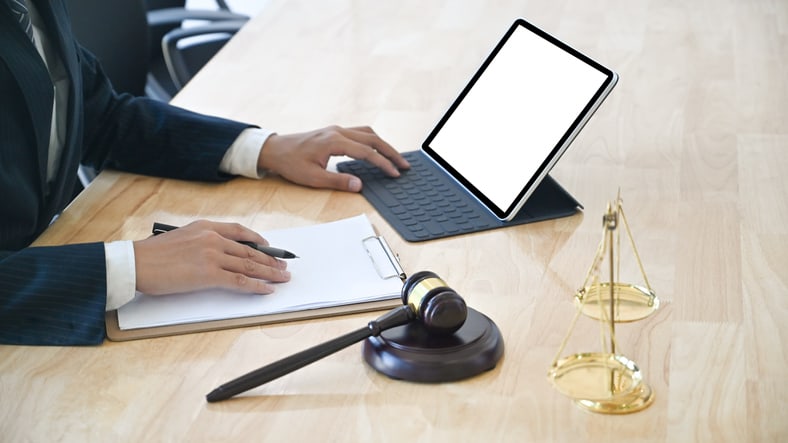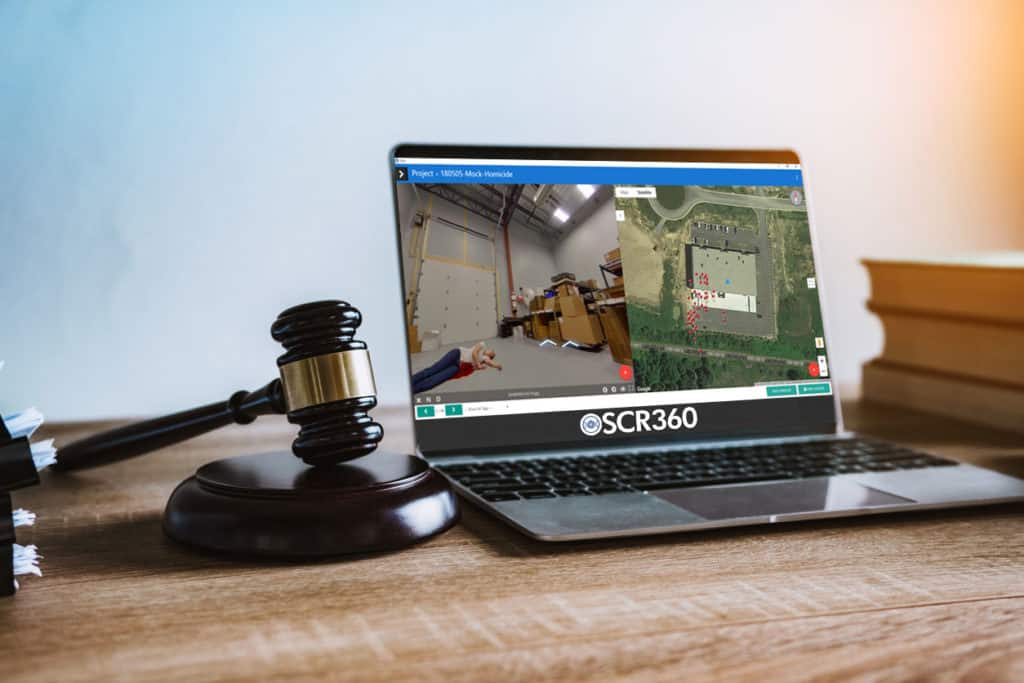
Welcoming new technology into your courtroom presentations may improve your conviction rate and assist in serving justice.
Fear of failure is a funny thing.
It can prevent you from making a terrible mistake.
But, it can also hold you back from accomplishing something new and incredible.

Technology in the courtroom.
As technology continually evolves in the world around us, it’s hard to deny the profound role that it plays in almost every area of our lives. Yet, we find that many in the legal profession are hesitant to adopt the latest technology in the courtroom. In fact, the methods in which district attorneys present their cases in court have changed very little over the course of time. After all, what they’re doing works. Court cases are intentionally built on the precedents set by past cases. What is the true value of bringing in new tech?
What if the value of courtroom technology greatly exceeds the risk of potential failure?
Let’s be real. No one wants to be in the courtroom and have their technology fail. No one. The most common courtroom technology fears we hear from prosecutors include:
- Correctly setting up technology/media – down to connecting the wires correctly.
- Glitchy or malfunctioning technology.
- Presenting too much information to the courtroom audience.
- Presenting incorrect information to the courtroom audience, or showing them something that they should not have seen.
- Requesting special access from the judge for accompanying technology.
- The risk that evidence won’t be admissible in the courtroom.
Each of these fears are valid. But, we also have to remember that times are changing and jurors expect a more interactive courtroom. Technology, like OSCR360, not only keeps the courtroom audience actively engaged in proceedings, but more importantly helps prosecutors prove guilt beyond a reasonable doubt.
How can you overcome courtroom technology fears with OSCR360, keep the jury engaged, and ultimately, gain convictions?

OSCR360 is the single platform to preserve all of your digital evidence and present your case to the court. After capturing 360° photos of the crime scene, public safety agencies and prosecutors can add close-up photos of evidence, video clips and more, to create a comprehensive and compelling virtual walkthrough of the entire case.
Here are a few key points to understand about OSCR:
- OSCR is used and accepted in court. Each 360° image is saved in .jpg format with a time and location stamp to demonstrate originality and authenticity. Each additional piece of evidence incorporated into the OSCR presentation follows traditional courtroom guidelines – requiring accuracy, authenticity, originality, and relevancy.
- Provide context and perspective within the scene with an OSCR360 virtual walkthrough. Connect the dots between where each piece of evidence was found. Rather than a choppy presentation that jumps between multiple platforms, OSCR presents everything – with you in complete control.
- OSCR has resulted in convictions in complex, high-profile cases. Attorneys in the Rideout Trial used OSCR to connect 4 suspects and over 700 pieces of evidence during closing arguments. The system has been used in other case convictions, including a child homicide trial, ax murder cold-case, and a hunting-related shooting incident where a woman was mistaken by a hunter for a deer.
- Seamless inter-agency collaboration is possible using OSCR. Easily share OSCR projects with other attorneys and cooperating law enforcement agencies from the moment the investigation begins, all the way through case closure. The OSCR viewer makes sharing case information with the defense simple.
- OSCR has been used to achieve pleas before a case reaches the courtroom. By providing a complete and objective view of the crime scene, OSCR puts forward a strong case, and pleas are reached quickly.
- OSCR is created to be intuitive and easy-to-use. Refute the idea that OSCR is “difficult” technology. If you can hook up an HDMI cable, you can use OSCR in court. If you can’t hook up an HDMI cable, you can still use OSCR in court – L-Tron support is available 24/7/365. In addition to call-in support, our team provides help videos to refer to within the software, “cheat cards” that come with the Capture Kit, and a full library of resources available on our website. Your success is our purpose.
The bottom line?
OSCR was created from your voice.
The system was built from the feedback of attorneys, judges, juries and law enforcement – to serve justice and make your job easier. While there is always some fear and trepidation in trying something new, attorney’s across the country have found the OSCR system invaluable in presenting their case. One county’s DAs believed that images of OSCR were so powerful for the jury to see, they special requested large monitors be brought into the courtroom for viewing their OSCR project.
Still concerned about introducing OSCR to your courtroom? The L-Tron team is happy to help and to discuss your unique courtroom technology fears and challenges.